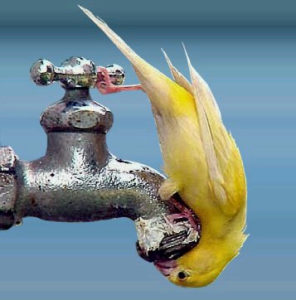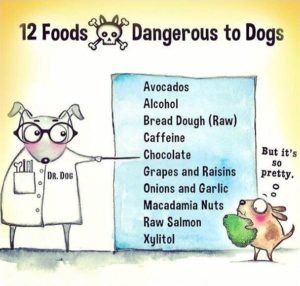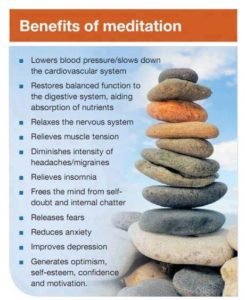by Susan Dean | Feb 2, 2018 | Health, Kitchen Recipes, Medicinal Recipes

10 REASONS TO DRINK MORE WATER:
We should drink more pure water every day. The absolute purist water is distilled water. Drink water on an empty stomach. When you drink a lot of liquid with a meal it dilutes your digestive enzymes and makes your digestion less effective. Get yourself a BPA free water bottle and carry it with you. .
-
-
- Our blood is over 80% water
- Our bones are over 50% water
- Drinking more water helps lessen pain in the body by getting the lymphatic system moving
- Water helps eliminate wastes and toxins from the body
- Water lubricates joints and reduces joint pain
- Water regulates your metabolism
- Water balances body temperature
- Water helps ensure adequate electrical functioning of the nervous system
- Water elleviates dehydration
- Every cell in the body requires adequate water to function properly
Staying hydrated keeps your memory sharp, your mood stable and your motivation intact. When you’re well-hydrated, you can also think through a problem more easily. Researchers hypothesize that not having enough water could reduce oxygen flow to the brain or temporarily shrink neurons — or being thirsty could simply distract you.
Water keeps your throat and lips moist and prevents your mouth from feeling dry. Dry mouth can cause bad breath and/or an unpleasant taste, and can even promote cavities.
Dehydration lowers your blood volume, so your heart must work harder to pump the reduced amount of blood and get enough oxygen to your cells, which makes everyday activities like walking up stairs — as well as exercise — more difficult.
When you’re well hydrated, the water inside and outside the cells of contracting muscles provides adequate nutrients and removes waste efficiently so you perform better.
Water is also important for lubricating joints. Contrary to popular belief, muscle cramps do not appear to be related to dehydration, but, instead, to muscle fatigue, according to Sam Cheuvront, Ph.D., an exercise physiologist for the U.S. Army Research Institute of Environmental Medicine.
When a person is severely dehydrated, skin is less elastic. This is different than dry skin, which is usually the result of soap, hot water and exposure to dry air.
The easiest thing that anybody could do on a daily basis is monitor their urine color,” says Douglas Casa, Ph.D., A.T.C., who studies hydration at the University of Connecticut. “Lighter urine color — like lemonade — means you’re generally well-hydrated. If it’s darker, like apple juice, you are most likely dehydrated.”
Staying hydrated keeps your memory sharp, your mood stable and your motivation intact. When you’re well hydrated, you can also think through a problem more easily. Researchers hypothesize that not having enough water could reduce oxygen flow to the brain or temporarily shrink neurons — or being thirsty could simply distract you.
Your kidneys need water to filter waste from the blood and excrete it in urine. Keeping hydrated may also help prevent urinary tract infections and kidney stones. If you are severely dehydrated, your kidneys may stop working, causing toxins to build up in your body.
And, no, unfortunately, drinking lots of water won’t prevent wrinkles.

10 Benefits of Drinking Warm Lemon Water
- Boosts your immune system: Lemons are high in vitamin C, which is great for fighting colds. They’re high in potassium, which stimulates brain and nerve function. Potassium also helps control blood pressure.
- Balances pH: Drink lemon water everyday and you’ll reduce your body’s overall acidity. Lemon is one of the most alkaline foods around. Yes, lemon has citric acid but it does not create acidity in the body once metabolized.
- Helps with weight loss: Lemons are high in pectin fiber, which helps fight hunger cravings. It also has been shown that people who maintain a more alkaline diet (see #2) lose weight faster.
- Aids digestion: Lemon juice helps flush out unwanted materials. It encourages the liver to produce bile that is an acid that required for digestion. Efficient digestion reduces heartburn and constipation.
- Is a diuretic: Lemons increase the rate of urination in the body, which helps purify it. Toxins are, therefore, released at a faster rate that helps keep your urinary tract healthy.
- Clears skin: The vitamin C component helps decrease wrinkles and blemishes. Lemon water purges toxins from the blood which helps keep skin clear as well. It can actually be applied directly to scars to help reduce their appearance.
- Freshens breath: Not only this, but it can help relieve tooth pain and gingivitis. The citric acid can erode tooth enamel, so you should monitor this.
- Relieves respiratory problems: Warm lemon water helps get rid of chest infections and halt those pesky coughs. It’s thought to be helpful to people with asthma and allergies too.
- Keeps you Zen: Vitamin C is one of the first things depleted when you subject your mind and body to stress. As mentioned previously, lemons are chock full of vitamin C.
- Helps kick the coffee habit: After a glass of hot lemon water, you won’t crave coffee in the morning.
by Susan Dean | Feb 2, 2018 | Health

Placement of the feeder should be done with care when it comes to windows. Birds get confused by reflections and accidentally fly into glass. “Window strikes take a huge toll on bird populations,” says John Griffin, the director of urban wildlife at the Humane Society of the United States. To avoid strikes, place feeder within three feet of a window or 30 feet away. “Within three feet they can’t get enough speed to do a lot of damage, and 30 feet is far enough away that they’re unlikely to get confused.
Six things you should never feed local birds:
Bread – Bread has zero nutritional value. If birds fill up on it, they end up not eating what they need. Angel wing is a condition birds get when their bones don’t develop properly because they aren’t getting enough nutrition This often occurs because bread is a staple of their diet. If the case is severe, birds won’t be able to fly.
Sugar – Sugar water ferments. Refill hummingbird feeders every 3 days. Fermented water can kill hummingbirds. Sugar ferments in the sun. If hummingbirds drink too much fermented liquid, it can lead to organ failure and death. Make sure to restock your hummingbird feeder with fresh liquid every three days or go the more natural route by growing plants that attract hummingbirds.
Chocolate – Don’t leave chocolate outside unattended. Chocolate is poisonous for birds and if they eat enough, it can be fatal. So keep your candy stash safely inside.
Rice – Like bread, rice lacks the nutrition that birds need. They’re likely to gorge themselves on it instead of eating nutritious food, resulting in vitamin and mineral deficiencies.
Salt – Don’t salt the water in your birdbath. Extreme care should be used when feeding anything with salt to birds. While salt is a part of birds’ normal diet, it’s easy for them to overdose. A better method to keep your birdbath from freezing is to float a small object in it and check regularly in cold weather.
Milk – If you’re setting out a saucer of milk for a neighborhood kitty, please don’t. Birds are lactose intolerant, and milk can cause severe gastric distress. In large quantities it can kill a bird.
by Susan Dean | Feb 2, 2018 | Health

Pet Food Safety
1. Chemical Preservatives (BHT and BHA) no one knows how these chemicals might affect human or pet health. Limit use if possible. It’s especially important for pets since they eat the same food at every meal, and have a higher exposure rate.
2. Menadione, known as vitamin K3, is a synthetic form of vitamin K. Vitamin K, found in leafy greens, helps the body form blood clots. Dogs and cats need very little. Their gut bacteria produce Vitamin K. There’s evidence K3 causes liver toxicity and damages cell membranes. It was banned from use in human food in 1963.
3. Meat-Byproduct Meals – This means all the refuse from the human food industry; organs, blood, bones, fatty tissue, and beaks. It’s generally OK to give pets small amounts of byproducts. Chicken byproduct meal is different. When the word “byproduct” is followed by “meal,” it means the meat leftovers were cooked for hours to kill off bacteria, viruses, and parasites. The meal may contain more questionable waste, such as very out-of-date supermarket meat, restaurant grease, and diseased or disabled livestock. Pet food cannot contain hoofs, horns, feces, or road kill. Chicken meal can be safe if you buy a high quality product. Look for “chicken” or “chicken meal,” not “poultry” or “poultry meal,” and no animal meal.
4. Corn Products – Dry kibble can be loaded with corn byproducts as filler in treats, like feed corn scraps, seen as the ingredient “corn gluten” on labels. Foods where corn is the main ingredient is a sign the product is nutritionally lacking. Buy brands whose main ingredients are specific meat protein, such as chicken or tuna.
5. Sweetener – Sugar is as bad for your pets as for you. Sweeteners are in poor quality foods and pets can get addicted to it. Leave products with sugar, corn syrup, cane molasses, fructose, glucose, and ammoniated glycyrrhizin (a licorice extract) on the shelf. Natural sweeteners like honey and blackstrap molasses are fine in small amounts in treats, but not in every meal.

Flea Powder
1 tsp. rosemary
1 tsp. fennel seeds
1 tsp wormwood
1 tsp dried rue
Lice use Artemesia
Natural Pet Remedies will save you money while keeping your carbon footprint and paw print in check!
1. Rid Fleas With Citrus – Fleas don’t like citrus. Rub your pet’s fur with a small amount of fresh lemon or orange juice. Put those mostly-juiced citrus rinds to use!
2. Repel Biters With Brewer’s Yeast – A dose of brewer’s yeast mixed with a small amount of garlic in dry food daily will help to repel fleas for dogs. For cats, add brewer’s yeast, but no garlic. (It can lead to anemia for felines).
3. Drown Fleas With Water – Fleas aren’t so grabby when deluged with the miracle solution known as water. Dip your pet in a tub of water and rinse as well as you can. A gentle shampoo (or natural liquid dish detergent) can help. Or you can take him to the lake or beach to swim!
4. A Clean House Makes Fleas Sad – Tidy housekeeping can keep the flea community down. Frequently vacuum your pet’s favorite hangout, launder pet blankets, towels and beds, and keep floor clean with a natural disinfectant.
5. Feed Flea Babies to the Worms – Beneficial nematode worms, available at garden shops and pet stores, like to eat flea larva. Keeping them in the garden can help keep outdoor flea populations down.
6. Make a Rose Geranium Tick Collar – Rose geranium essential oil is successful for repelling ticks from dogs, apply a few dabs to your dog’s collar. (Not recommended for cats.)
7. Treat the Feet – If your dog’s feet seem sore from rough terrain, hot or cold pavement, or any other reason, check the paws and toes. Remove anything that doesn’t belong there, wash gently, and apply a gentle moisturizer. If bleeding, apply antibiotic ointment and gently bandage them.
8. Spray Chamomile for Icky Skin – Chamomile tea is great for alleviating skin irritations. Make tea, put it in a spray bottle in the refrigerator, and apply it to your pet’s raw skin.
9. Pamper the Pup with Vitamin E – A dog’s dry skin can benefit greatly from applications of vitamin E oil to affected areas.
10. Kick Itch with Oatmeal – Use baby oatmeal (or fine-grind your own), add water, and rub the paste onto itchy areas. Leave on for 10 minutes and rinse with warm water. Works!
11. Rehydrate a Sick Dog – Flavorless electrolyte drinks, like sports waters and pediatric drinks, can help a sick dog recoup necessary fluids after a bout of diarrhea or vomiting.
12. Make a Happy Tummy – Pets on antibiotics may have stomach problems as the medication wipes out beneficial bacteria as well as the sinister ones. A little yogurt (with live active cultures) with dinner will help the stomach.
13. Relax Aching Eyes – If you pet’s eyes seem irritated or infected, a warm chamomile tea bag can be used to soothe them.
14. Use Epsom Salt for Sprains and Strains – Your limping dog may have strained or sprained something. Add ½ cup Epsom salt to a warm bath and let your dog soak for five minutes, twice daily. If your dog doesn’t agree with you on this method, you can soak a washcloth in Epsom salt and warm water and apply to the local area.
15. Reduce Facial Hot Spots by Switching Bowls – If your pet eats from plastic bowls and suffers from chronic hot spots, irritation, or allergic reactions around the face, the fix may be as easy as changing to a glass or metal bowl. Plastic harbors bacteria and other nastiness that can be very irritating. Be sure to wash the bowls thoroughly.
16. Fight Hairballs With Butter – The grooming brush is your best defense against hairballs, A daily brush followed by a wipe from a moist towel should help considerably. But during high hairball season, a half a teaspoon of butter for a few days can really help.
17. Administer Juice for the Bladder – Cats are naturally prone to bladder and urethra issues. Unsweetened cranberry increases urine acidity resulting in a reduced chance of blockages or infections. Add cranberry powder to food, or cranberry juice to the water, or give your cat a cranberry capsule.
18. Prunes or Canned Pumpkin for Digestion – In older animals, digestion can get a bit bumpy. If your pet is more mellow than usual, is straining, and makes frequent toilet attempts, constipation may be the problem. Adding canned pumpkin or diced prunes to food could get things started again. For a sever case, try mixing in a tablespoon of Milk of Magnesia. Prune pits are toxic to both animals and humans, so make sure they are pit-free.
19. When They Eat Something They Shouldn’t Have – If your pet devours something toxic, you can use hydrogen peroxide to induce vomiting. Give them one teaspoon per five pounds of body weight, and repeat once if needed. (Call your vet)
Home Remedies for Fleas
The essential oils used here are all natural insecticide/pesticides, shown to either kill or deter the pests due to their naturally occurring chemicals.
1. Flea collar
A flea collar is a great way to ward off fleas without always having to reapply something topically, and it keeps the flea control constant and steady.
3-5 drops of cedar oil or lavender oil
1-3 tablespoons of water
Bandana OR your dog’s collar
eyedropper (optional)
Dilute 2-3 drops of your chosen oil in 1-3 tablespoons of water. If you go up to ½ teaspoon you can use up to 5 drops of the liquid. Using an eyedropper, apply 5-10 drops of the mixture to a bandana and rub the sides of the fabric together and tie it about your dog’s neck. Reapply oil mixture to the collar once a week. 1 or 2 drops of oil diluted with 1 tablespoon of olive oil can be placed at the base of your dog’s tail.
2. Flea deterring drink– can be used alongside any of these remedies.
1 teaspoon white distilled vinegar or apple cider vinegar
For every 40 pound dog add 1 teaspoon of white distilled vinegar or apple cider vinegar to 1 quart of their drinking water. Braggs Apple Cider Vinegar deters fleas and improves a pups skin and coat condition from the inside-out.
3. Flea comb
This contains lemon and lemon contains something called limonene, which is a chemical that kills and repels fleas but is harmless to us or our pets.
1 freshly sliced up lemon
1 pot of fresh water
comb, sponge, or brush
Boil a pot of water and add the slices of a freshly cut lemon to it. Turn off the heat after the lemons has been added and cover the pot, letting the mixture steep overnight. The next day dip a comb or your pets brush in the liquid (make sure it’s sufficiently cool) and run it through their hair.
4. Flea spray
Your pup will get a nice gleaming finish to their coat after using this flea spray.
1 cup white distilled vinegar OR 1 cup apple cider vinegar OR a 50/50 blend of both
1 quart fresh water
2-3 drops of lavender or cedar oil
spray bottle
The essential oil gives the spray an extra edge and a nice smell. Add 2-3 drops as you add 1 cup of white distilled vinegar/apple cider vinegar to 1 quart of fresh water. Fill your spray bottle, and mist your dog. Avoid spraying near the face. Dampen a cloth with the mixture and wipe it around the neck and behind the ears/their chin area. Spray your pets bedding and around it lightly with this mixture.
5. Flea (be-gone) bag
This little sachet contains things that smell pleasant to us, but that drive pests away from your pet.
Two 6 inch squares of breathable fabric (such as muslin)
handful of cedar chips
1-2 teaspoons of dried lavender buds
peel of 1 lemon
Cut 2 6 inch squares of fabric and place them together inside out. Sew all but 1 side and turn inside out. Fill with a rough handful of fragrant cedar chips, 1-2 teaspoons of lavender, and 1 lemon peel. Leave enough room at the top so you can tie it off with a ribbon or sew it shut (tying allows you to reuse it when the contents lose their potency.) Place under your pets bed/bedding or near it to ward off fleas. Change the mixture every month or so.
6. Flea bath– wash your pup with this weekly to deter fleas.
half a cup of freshly squeezed lemon juice*
1 ½ – 2 cups of fresh water
1/4 –1/2 cup of mild pet-friendly soap or shampoo
Stir together a half a cup of lemon juice, 1½ cups of water, and ¼ cup of mild pet-friendly shampoo or soap. Bottle and label and bathe weekly to keep fleas away. As a general rule of thumb, use 2 parts water to every ½ cup of soap and lemon juice.

by Susan Dean | Feb 2, 2018 | Health

Benefits of Napping
Many Europeans believe in the benefits of napping and shut down work in the afternoon to allow everyone to take a quick power nap, recharge, and come back to work. In the U.S., a mid-day nap is a luxury and often is perceived as laziness.
Studies have shown that short naps can improve awareness and productivity. You don’t need much; 15 to 20 minutes can make a world of difference.
A study from the University of Colorado Boulder discovered that children who didn’t take their afternoon nap didn’t display much joy and interest, had a higher level of anxiety, and lower problem solving skills compared to other children who napped regularly. The same goes for adults as well. Researchers with Berkeley found that adults who regularly take advantage of an afternoon nap have a better learning ability and improved memory function. Why is napping so essential? Because it gives your brain a reboot, where the short-term memory is cleared out and our brain becomes refreshed with new defragged space.
According to experts, 10 to 20 minutes is quite enough to refresh your mind and increase your energy and alertness. The sleep isn’t as deep as longer naps and you’re able to get right back at your day immediately after waking up. If you nap for 30 minutes you may deal with a 30-minute grogginess period because you wake up just as your body started entering a deeper stage of sleep. The same can be said if you sleep for an hour, but on the other hand, these 60-minute naps provide an excellent memory boost. The longest naps— lasting about 90 minutes—are recommended for those people who just don’t get enough sleep at night. Since it’s a complete sleep cycle, it can improve emotional memory and creativity.
Naps are good for you physical and mental well being so you should practice them as much as you can. However, be advised that you shouldn’t sacrifice nighttime sleeping for an afternoon nap, they should be an addition to a good night sleep.
SLEEP DEPRIVATION’S TOLL
Make napping a regular part of your healthy lifestyle
Sleep has a wide range of health benefits, from protection against heart disease and obesity to stronger bones and memory. But napping has some particular perks all its own. Below are six healthy reasons to indulge in a siesta. It doesn’t have to be long — even just 20 minutes of daytime shut-eye can make a world of difference.
Boosts Alertness
Once you blink away those first few seconds of grogginess after a nap, you’re likely to benefit from a boost of alertness. A NASA study found higher measures of alertness in pilots after a 40-minute snooze. Even just 20 minutes has been shown to perk up shift workers, according to Harvard Men’s Health Watch. Onestudy found that after a 10-minute nap, study participants reported feeling more alert.
Improve Learning And Memory
It’s the REM sleep that’s been linked with the cognitive process. It takes a longer nap to reap real brain benefits, but if you can squeeze in an hour, or 90 minutes, you may find your mental fatigue has vanished upon waking. A longer nap may leave you a little groggy, but has a longer benefit to brainpower. MRI scans show that brain activity remains higher in nappers all day compared to people who don’t take a nap.
Increased Creativity
Ever waked up suddenly knowing the solution to what’s bugging you? A team of researchers set about monitoring the brain to attempt to figure out why the light bulb turns on after napping. They discovered a burst of activity in the right hemisphere, the side most strongly linked to creativity, Health.com reported. An earlier study found that longer naps that allowed sleepers to enter REM led to better performance on a series of creative word problems, National Geographic reported. Boosts Productivity
Experts agree that an afternoon nap is in fact the opposite of laziness in the workplace: That siesta can actually improve work output. A short power nap can be just the right pick-me-up for sleep deprived, worn-out employees, sleep researcher Sara Mednick told Businessweek.
Lift Your Spirits
Think back to the last time you were around a toddler who hadn’t napped. It’s not a pretty picture, is it? A quick nap is a well-documented mood booster.
Zap Stress
Part of the reason a nap can get you smiling might be related to relaxation. The sheer luxury of escaping for a nap can be a great stress-reliever, even if you don’t sleep for long (and as long as you don’t let the stigma against napping get to you). The National Sleep Foundation recommends considering it “a mini-vacation.” And don’t stress if you can’t actually doze off in your allotted 10 minutes: A 2007 study found that asleep or not, a short period spent resting in bed is just as relaxing.

Foods to Help You Sleep
Cherries
In one small study, participants drank eight ounces of tart cherry juice in the morning, and another eight ounces in the evening, for two weeks and reported better sleeping habits. Why does it work? All varieties of cherries are naturally high in melatonin, a hormone that makes you sleepy. Eat a cup of whole cherries as a late-night snack if you’d rather not drink juice.
Fish
Fish are rich in tryptophan, a natural sedative, with shrimp, cod, tuna and halibut having the highest levels, even more than turkey. Since not all seafood choices are healthy (some are high in contaminants) or for the planet (many are overfished, or methods for catching them kill other species), stick to catches like Pacific cod from Alaska or pole-caught Albacore tuna from the U.S. or British Columbia.
Lemon Balm
This lemon-scented member of the mint family has been a sleep-inducing superstar for ages, but it seems to be most effective in combination with another herb called valerian. In one study published in the journal Phytotherapy Research, 81 percent of people with minor sleep problems who took a combination of the herbs reported sleeping better than people on a placebo. Both can be purchased as supplements, or you can make a tea by steeping 1 to 2 teaspoons of dried lemon balm and 1 teaspoon of valerian root in 1 cup of hot water for 5 to 10 minutes. (If you take other medications, though, ask a doctor or pharmacist about any potential herb-drug interactions.)
Chamomile
Another herb that works as well as lemon balm, chamomile has been used as an herbal remedy for insomnia for thousands of years. In one animal study, it calmed down mice as effectively as tranquilizers, and in the only human study to study the effectiveness of chamomile, the herb reduced mild to moderate generalized anxiety disorder much better than placebo. Ready-made chamomile teas are sold in every supermarket, so it’s an easy remedy to get your hands on
Bananas
These perfectly snack-sized superfruits are packed with potassium and magnesium, two minerals that promote muscle relaxation. In fact, magnesium deficiencies are related to restless leg syndrome and nighttime muscle cramps, two conditions that can certainly interfere with your sleep. Make it a goal to eat one banana a day to see if that helps your sleep problems.
Spinach
In addition to being rich in potassium and magnesium, spinach is high in calcium, yet one more mineral that plays a role in sleep. Calcium helps the body generate melatonin, the hormone that helps your body maintain its circadian rhythm. You can get the same benefits from other dark leafy greens, such as Swiss chard, kale, turnip greens and collard greens.
Dairy
Like spinach, dairy products are rich in melatonin-boosting calcium, and a number of studies are finding that calcium deficiencies are linked to poor sleep quality. So there may be something to that old adage that a glass of warm milk will help you sleep, after all!
Almonds
They’re full of magnesium and yet another source of calcium. You can eat a handful of almonds or spread some almond-butter on a piece of whole grain bread, which will help you get to sleep for another reason .
Protein Combos
There’s some debate as to how well your body handles tryptophan, and a study from the Massachusetts Institute of Technology found that getting it from high-protein foods can work against you, because protein can prevent tryptophan from entering your brain. But when you combine high-protein foods with carbs, the insulin your body produces in response to the carbs makes it easier for tryptophan to break through your brain’s barriers. So think oatmeal with bananas and almonds, for a real sleepy snack, or whole-grain cereal with organic milk.

by Susan Dean | Feb 2, 2018 | Health, Kitchen Recipes, Medicinal Recipes

LAUGH – IT’S GOOD FOR YOUR HEALTH!
The field of gelotology is exploring the benefits of laughter. It was brought to the public’s awareness in Norman Cousins’ memoir Anatomy of an Illness. Cousins found that comedies helped him feel better and get some pain-free sleep. That’s because laughter helps the pituitary gland release its own pain-suppressing opiates. What can laughter do?
· Lowers blood pressure
· Increases vascular blood flow and oxygenation of the blood
· Gives a workout to the diaphragm and abdominal, respiratory, facial, leg, and back muscles
· Reduces certain stress hormones such as cortisol and adrenaline
· Increases the response of tumor- and disease-killing cells such as Gamma-interferon and T-cells
· Defends against respiratory infections–even reducing the frequency of colds–by immunoglobulin in saliva.
· Increases memory and learning; in a study at Johns Hopkins University Medical School, humor during instruction led to increased test scores
· Improves alertness, creativity, and memory
Humor and creativity work in similar ways, says humor guru William Fry, M.D., of Stanford University–by creating relationships between two disconnected items, you engage the whole brain. Humor works quickly. Less than a half-second after exposure to something funny, and electrical wave moves through the higher brain functions of the cerebral cortex. The left hemisphere analyzes the words and structures of the joke; the right hemisphere “gets” the joke; the visual sensory area of the occipital lobe creates images; the limbic (emotional) system makes you happier; and the motor sections make you smile or laugh. So let’s laugh. What makes you laugh?
Smile . . . .
Smiles improve your appearance. Think about how you feel about a person frowning and a person smiling – who’s the most pleasing?
Smiles say more than words can. A smile can restore your balance. It lets others know you are comfortable with them, and that you willingly agree to make amends where needed.
Smiles create trust and rapport. A smile is a way of establishing mutual feelings of being on the same page, whether one-to-one or in a group. It says “I’m OK, you’re OK, and we’re all going to enjoy one another’s company.”
Smiles make you feel good. Even if you’re feeling a little blue, insert happy thoughts into your mind and just add that smile. It will trick your mind into feeling better, as endorphins are released to reduce physical or emotional stress. Have a beautiful life!





by Susan Dean | Feb 2, 2018 | Health, Kitchen Recipes, Medicinal Recipes
Lose not the advantage of solitude, and the society of thyself. -Thomas Browne’

It is as important to cultivate your silence power as it is your word power. William James
Mindfulness Meditation Linked with positive brain changes
It Makes Your Brain Plastic
Quite literally, sustained meditation leads to something called neuroplasticity, which is defined as the brain’s ability to change, structurally and functionally, on the basis of environmental input. For much of the last century, scientists believed that the brain essentially stopped changing after adulthood. But research by University of Wisconsin neuroscientist Richard Davidson has shown that experienced meditators exhibit high levels of gamma wave activity and display an ability — continuing after the meditation session has attended — to not get stuck on a particular stimulus. That is, they’re automatically able to control their thoughts and reactiveness.
It Increases Gray Matter
A 2005 study on American men and women who meditated a mere 40 minutes a day showed that they had thicker cortical walls than non-meditators. What this meant is that their brains were aging at a slower rate. Cortical thickness is also associated with decision-making, attention and memory.
It Can Be Better Than Sleeping
In a 2006 study, college students were asked to sleep, meditate or watch TV. They were then tested on their alertness by being asked to hit a button every time a light flashed on a screen. The meditators did better than the nappers and TV watchers — by a whole 10 percent.
It’s Better Than Blood Pressure Medication
In 2008, Dr. Randy Zusman, a doctor at the Massachusetts General Hospital, asked patients suffering from high blood pressure to try a meditation-based relaxation program for three months. These were patients whose blood pressure had not been controlled with medication. After meditating regularly for three months, 40 of the 60 patients showed significant drops in blood pressure levels and were able to reduce some of their medication. The reason? Relaxation results in the formation of nitric oxide that opens up your blood vessels.
It Can Protect Your Telomeres
Telomeres — the protective caps at the end of our chromosomes — are the new frontier of anti-aging science. Longer telomeres mean that you’re also likely to live longer. Research done by the University of California, Davis’ Shamatha Project has shown that meditators have significantly higher telomerase activity than non-meditators. Telomerase is the enzyme that helps build telomeres, and greater telomerase activity can possibly translate into stronger and longer telomeres.
It Can Slow The Progression Of HIV
A 2008 study on HIV positive patients found that, after an eight-week meditation course, patients who’d meditated showed no decline in lymphocyte content compared with non-meditators who showed significant reduction in lymphocytes. Lymphocytes or white blood cells are the “brain” of the body’s immune system, and are particularly important for HIV positive people. The study also found that lymphocyte levels actually went up with each meditation session. However, due to the small sample size — only 48 volunteers — it’s harder to draw definitive conclusions.
It’s Pain Relieving Properties Beat MorphIne
Earlier this year, a study conducted by Wake Forest Baptist University found that meditation could reduce pain intensity by 40 percent and pain unpleasantness by 57 percent. Morphine and other pain-relieving drugs typically show a pain reduction of 25 percent. Meditation works by reducing activity in the somatosensory cortex and increasing activity in other areas of the brain. This study also had a small sample size, making it harder to draw definite conclusions.




















